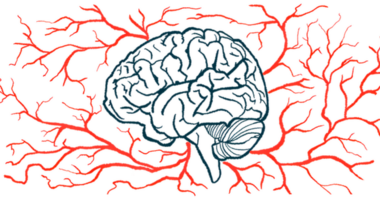STAT3 found to protect neurons, improve motor function in rat study
Gene-activating STAT3 may be potential therapeutic target for Parkinson's

A protein called STAT3 protected nerve cells from degeneration and improved behavioral and motor outcomes in a rat model of Parkinson’s disease, a study reveals.
STAT3 potentially offers “a new avenue for treatment against Parkinson’s,” researchers wrote in the study “STAT3 protects dopaminergic neurons against degeneration in animal model of Parkinson’s disease,” which was published in Brain Research.
Dopaminergic neurons are a specialized type of nerve cell in the brain and spinal cord that produce dopamine, a signaling molecule used by nerve cells to communicate. In people with Parkinson’s, dopaminergic neurons in a region of the brain called the substantia nigra degenerate, disrupting dopamine signaling and triggering the onset of motor symptoms.
While the exact cause for the loss of dopaminergic neurons hasn’t been established, the formation of abnormal clumps of protein known as Lewy bodies is thought to play a role. Inflammation, oxidative stress (a type of cell damage), and the dysfunction of mitochondria, which are the source of energy for cells, have also been associated with nerve cell death in Parkinson’s.
STAT3 involved in development, function of several body systems
STAT3 is a gene-activating protein found in tissues throughout the body and is involved in the development and function of several body systems. In the immune system, STAT3 transmits signals for the maturation of immune system cells and helps regulate inflammation. The protein has also been found in mitochondria, where it’s associated with reduced oxidative stress.
In the new study, a team of scientists at Temple University, in Pennsylvania, tested the effects of STAT3 in cells and a rat model of Parkinson’s.
The gene encoding STAT3 was delivered to rat dopaminergic neurons using a harmless adeno-associated virus. Cells were exposed to 6-hydroxydopamine (6-OHDA), a chemical that’s selectively toxic to dopaminergic neurons.
The researchers found significantly fewer cells treated with STAT3 died than untreated cells (25.2% vs. 44.5%). Treatment also attenuated the production of reactive oxygen species, a sign of oxidative stress associated with mitochondria dysfunction.
Injection of 6-OHDA into one side of the rats’ brains induced the death of dopaminergic neurons in the substantia nigra and the onset of motor symptoms. With STAT3 treatment into the brain three weeks before 6-OHDA, there was very good neuronal survival and normal neuronal structure one month after 6-OHDA administration.
To measure the effect of STAT3 on behavior, the researchers injected rats with the stimulant amphetamine and counted the number of times the animals performed complete rotations. The scientists can measure the severity of brain damage in the animals by counting how many times they rotate. Brain damage induced by 6-OHDA led to a high rate of rotations, whereas treatment with STAT3 significantly reduced rotations.
Motor function was assessed by placing rats in a glass cylinder, where they normally rear and search the wall using both paws. The rats exposed to 6-OHDA had markedly reduced use of the limb opposite to the side of the brain with damage. Treatment with STAT3 significantly increased the use of the opposite paw.
“This study successfully demonstrated the impact of [STAT3] expression and its protective effects on 6-OHDA-induced dopaminergic neurons,” the scientists concluded. “Behavioral studies validated the neuroprotective effects of STAT3.”
STAT3 “could serve as a target for therapy in the future,” they wrote.







